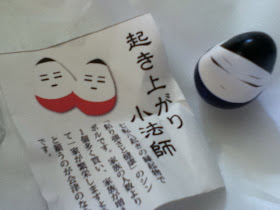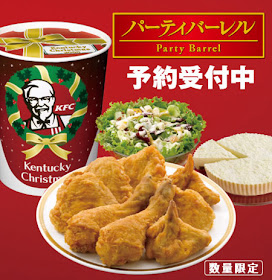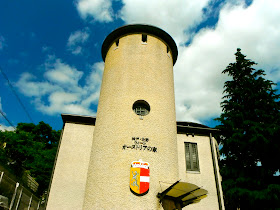It's almost 11pm on a Friday night here, and it's exactly one month since I left Japan. To mark this important date, and also sort of because I have nothing better to do this evening, I'm going to treat you all to a detailed account of what I did on my final night in Japan. I had a bath.
Now of course, in Japan, a bath is not just a bath. Bathing is a highly ritualized process in Japanese culture, and for this reason public bathhouses (sento) and hot springs (onsen) are as common as supermarkets. Like, it's completely normal for someone to say, 'I'm just popping off to the bathhouse, be back in a bit.' There is also a special etiquette surrounding baths in Japan, for example, while we use baths for cleaning ourselves in the west, in Japan you must scrub yourself practically raw before entering the bath, as the water needs to stay pure for all the patrons to soak in it. Another rule that is often enforced is no tattoos allowed, in order to keep the yakuza out.
I had managed to avoid going to a bathhouse throughout my stay in Japan, despite being told by many Japanese friends that it was an awesome experience and I should totally try it. But I was apprehensive about two things. First, the whole being-naked-in-public thing. And second (any relatives who may be reading this, promise not to tell Nana), I have a small tattoo. Ironically, of a Japanese peace crane. So it's probably unlikely that I would be mistaken for a participant in the Japanese criminal underworld. However, I still had this image of myself being kicked out of the bathhouse immediately, without being given the chance to retrieve my clothes, and then I would have to take the train home naked, all the while apologising to fellow passengers for displaying my tattoo in public.
Then, on our last night in Japan, our friend messaged us with the plan. A group of us were going to the PL Fireworks display near Tondabayashi - one of the largest fireworks shows in the world - and then we would visit a local sento, before going back to his house for the night. I had no escape. I was certain that my last night in Japan would be tainted by the embarrassment of being banished from a bathhouse.
We watched the fireworks display from a field in the middle of the countryside on the outskirts of Osaka, surrounded by peach trees and screeching cicadas. Halfway through the fireworks, it began pouring with rain, a freak summer storm. "Oh," I said brightly, as we all got drenched, "we won't be needing that bath!" Then the rain stopped, the cicadas resumed chirping conspiratorially, and I resigned myself to the fact that, like it or not, I was going to the bathhouse.
The sento was more like a spa resort than how I had imagined a public bathhouse to be (I was picturing something akin to a murky school swimming pool). It was also surprisingly busy for 11pm at night, and there were lots of families there, including little children. We were given a special bracelet with a locker key, and barcode on it which we could use to pay for things at the gift shop, juice bar and dining area, and charge to our account. We were also given a bag containing pyjamas, a large towel, and a facecloth. Then we split off into the girls and boys changing rooms.
One of my Japanese teachers had once told us that the great thing about Japanese sento and onsen was that, in such a hierarchical society, it was a place where everyone was equal, the rationale being that everyone is the same when they are naked. As a blonde, pale foreigner, I am not so sure about this theory. I certainly felt quite conspicuous. For obvious reasons there won't be any photos in this post, but I have put together an illustration to represent my bathhouse experience.
 |
| The only blonde in the bathhouse... |
What happens is you go into the changing rooms, put your clothes and towel in your assigned locker, and then take your facecloth into the shower area with you. I sneakily used my facecloth to cover my tattoo the whole time, but I've gotta say, I would have preferred to be able to use it to cover other, ahem, parts... anyway. You then sit down at the little showers, which are set up in a row, and use the shampoo, soap and face wash provided to thoroughly clean yourself. After doing that, you're free to either soak in the baths and hot pools, or put your pyjamas on and roam around the bathhouse, which often have facilities other than just the baths themselves. The one we were at had a sauna area, so we decided to meet up with the boys in there.
The sauna area was amazing. It was full of different rooms ranging in temperature from about 50 to 80 degrees, and each room had different pebbles, rocks and minerals that you lay down on. There were also attendants with big leafy fans who would walk around the rooms and fan you if you needed it. It was clearly meant to be a place of silent meditation, but being the responsible young adults we are, we all kept getting the giggles and behaving inappropriately.
After a while we decided to go back into the girls/boys separate areas, and have a soak in the range of indoor and outdoor baths. To do this meant going through the lengthy showering procedure again, but funnily enough, by then I was strangely used to parading around the place in the nude. I got complacent. I confidently entered one of the baths, feeling quite satisfied with myself. Suddenly, a fully-clothed bathroom attendant came over to me, looking disapproving. Oh my god. The tattoo. It was all over.
"Please excuse me, but could you possibly tie your hair up while you are in the bath, miss?"
She smiled sweetly, and handed me a hair tie. I apologised, tied my hair up, and slid guiltily back under the water, like a slippery fish who had narrowly avoided being caught...
Just after midnight, we got out of the baths, got dressed, and went out into the dining area, where the Olympics was being shown on large screens. We drank bottled milk - in Japan it's traditional to drink milk after using the baths - and watched Japan win a gold medal in the gymnastics, staying until the sento closed at 1.30am. We were all in high spirits afterwards, and felt exceptionally clean, warm and relaxed. I felt like my muscles had been restored to their prime condition, and were ready for lugging suitcases all the way to the airport the next day. I would recommend it to anyone.
So, there you have it. I spent most of my last night in Japan in a bath. No regrets.
.JPG)
.JPG)

.JPG)


.jpg)





















.JPG)










.JPG)
.JPG)












